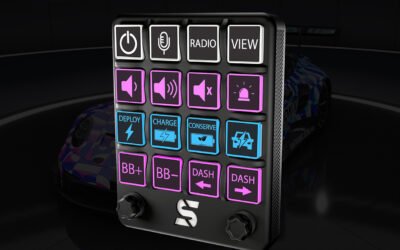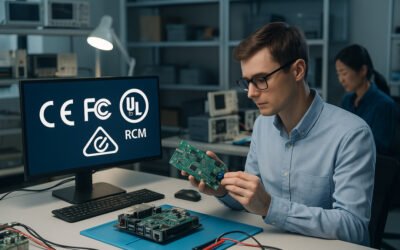
1. Introduction to the Project
Why Ozone Generators Matter in Modern Applications
Ozone isn’t just a buzzword from your science textbook. It’s a powerful gas used for sterilisation, water treatment, and air purification. Industries are always on the lookout for more efficient ways to generate high concentrations of ozone safely and reliably. That’s where electronics design and system design come into play. A well-built ozone generator can make the difference between a device that just “works” and one that consistently delivers industrial-grade performance.
The Purpose Behind Our Modular Design
A client approached us with a challenge: develop a high-performance ozone generator around their proprietary plasma tube technology. They wanted something powerful, modular, and easy to repair — not another throwaway device. We designed the supporting electronics and system architecture to bring their idea to life. Imagine a machine you can tweak like Lego blocks — replace a fan, swap a control module, or upgrade a housing without scrapping the whole unit. This project proved that with thoughtful electronics design and clever system integration, we could deliver both performance and sustainability.
2. System Design Philosophy
Balancing Performance, Safety, and Modularity
When you’re dealing with ozone, the stakes are high. Too little output and the system’s useless. Too much without proper safety controls, and you’ve got a hazard on your hands. Our system design philosophy was simple: get the performance right, but never compromise on safety. At the same time, modularity had to be built in from day one. That meant designing each subsystem — the power converter, the plasma tube interface, the fans, and the control module — as a standalone building block.
The Repairability and Sustainability Factor
Traditional ozone generators often end up in landfills when a single part fails. That didn’t sit right with our client. Repairability became a guiding principle, shaping how we approached the electronics design. Instead of locking everything into one sealed box, we developed accessible modules and replaceable parts. The sustainability benefit is huge — less waste, fewer costs, and a product that grows with its user rather than becoming obsolete in a few years.
3. Core Electronics Design Approach
Flyback Boost Converter for High Voltage Generation
At the heart of this ozone generator lies the flyback boost converter. If you’re not familiar, think of it as the muscle behind the system — taking a modest input and cranking it up into the high-voltage levels required to drive the client’s plasma tube. Designing this converter was about more than just stepping up voltage. We had to focus on efficiency, stability, and noise suppression. No one wants a humming, overheating device that burns itself out in weeks. Our electronics design ensured a balance between compact size and rock-solid reliability.
Control Module for Intelligent Operation
Raw power is great, but without brains it’s wasted. The control module serves as the intelligence layer, monitoring performance and adjusting outputs in real time. Whether it’s regulating fan speed, detecting overheating, or fine-tuning voltage, the control system keeps everything in check. In practice, this means a safer, more consistent ozone generator. Instead of relying on fixed, “dumb” settings, we created a responsive system that adapts to conditions — the kind of system design our client needed for professional-grade equipment.
4. Proprietary Cold Plasma Tube Technology
Unique Features of the Client’s Tube Design
The plasma tube is where the magic happens — it’s the component that actually produces ozone. Our client developed a proprietary cold plasma tube design that set this generator apart from off-the-shelf systems. Unlike traditional tubes that wear down quickly or struggle with efficiency, theirs focuses on durability and high output. Think of it as the “engine” in a high-performance car — robust, finely tuned, and built to last.
Achieving High Ozone Concentration Outputs
Generating ozone is one thing. Generating high concentrations of ozone reliably is another challenge entirely. The client’s cold plasma tube is optimised to deliver dense ozone streams while keeping power consumption in check. By integrating their design with our electronics system, we were able to achieve outputs that punch well above the generator’s weight. This makes the unit suitable not only for small-scale use but also for industrial applications where performance isn’t optional — it’s expected.
5. Cooling System Integration
Role of the Dual Fan System
Heat is the silent killer of most electronic systems. For an ozone generator, where plasma tubes and high-voltage circuits are constantly working, cooling isn’t just a nice-to-have — it’s essential. We integrated two fans into the system design, strategically positioned to create airflow across the most heat-sensitive components.
Thermal Management for Longevity
A well-cooled system doesn’t just run better; it lasts longer. By prioritising thermal management in the electronics design, we extended the generator’s lifespan and improved stability under heavy loads. It’s the difference between a car that overheats after a short drive and one that can cruise effortlessly on the motorway for hours. For our client’s modular generator, longevity isn’t just about durability; it’s about keeping maintenance costs low and ensuring users get the most from their investment.
6. Modular and Repairable Construction
Benefits of a Modular Architecture
Why go modular? Simple: flexibility. Each major subsystem is designed as a self-contained module. If the control board needs an upgrade, you swap it. If the plasma tube reaches the end of its life, you replace just that part. This design choice isn’t just convenient — it’s a game changer in how ozone generators can be maintained and improved over time.
Future-Proofing Through Repairability
Too many electronic devices today are built with planned obsolescence in mind. Together with our client, we went the other way. Repairability means users can keep their systems running for years without needing to buy an entirely new unit. For industries that rely on ozone, this translates into cost savings and predictable performance. For the planet, it means fewer devices ending up as e-waste.
7. Role of 3D Printing in the Project
Precision Manufacturing with Zeutek 3D Printing
We leveraged Zeutek’s 3D printing capabilities to create custom parts for the generator. 3D printing gave us the flexibility to prototype quickly and refine designs without the delays of traditional manufacturing. It’s like having a workshop where ideas move from concept to physical reality almost instantly.
Custom Enclosures and Component Housing
Beyond prototyping, 3D printing allowed us to design housings and enclosures tailored to the system. This meant snug fits, better airflow, and a cleaner overall build. In electronics design, details matter. A poorly fitted enclosure can mean overheating, rattling parts, or unnecessary wear. By controlling the design in-house, we ensured every piece fit together perfectly, reinforcing both function and form.
8. Materials and Component Choices
High-Quality Electrical Components
We didn’t cut corners when it came to component selection. Using high-grade capacitors, transformers, and connectors meant the system could handle continuous operation without breaking down. In electronics design, quality components are like using premium fuel in your car — the difference shows over time.
Safety-Critical Material Selection
Ozone is reactive, which means the wrong materials can degrade quickly or even pose risks. Every piece in contact with ozone had to be carefully chosen to resist corrosion and wear. The result? A system that stays safe and reliable over the long haul. These choices underpin the system design, ensuring performance isn’t compromised by premature failures or safety hazards.
9. Challenges During Development
Managing Ozone Safety Standards
Ozone may be useful, but it can be harmful in high concentrations. One of our biggest challenges was ensuring the generator could produce high outputs while still meeting safety requirements. This meant designing effective seals, housing, and airflow management to control ozone release.
Overcoming High-Voltage Engineering Barriers
High voltage circuits are always tricky, and the flyback boost converter added its own set of hurdles. We had to combat issues like electrical noise, insulation breakdown, and component heating. Solving these problems wasn’t easy, but it forced us to push our electronics design skills further, ultimately creating a system that’s safe, efficient, and durable for the client.
10. Testing and Validation
Performance Testing for Ozone Output
No project is complete without proof. We carried out rigorous performance testing to validate ozone concentrations across different operating conditions. The data confirmed that the client’s proprietary cold plasma tube could deliver consistently high outputs — not just in short bursts, but sustained over time.
Durability and Environmental Stress Testing
Electronics rarely fail in ideal lab conditions; they fail in the real world. To ensure robustness, we put the system through stress tests, including temperature extremes and extended runtime cycles. The generator passed with flying colours, confirming the system design wasn’t just theoretical but ready for demanding applications.
11. Applications of the Ozone Generator
Industrial Uses
Industries rely on ozone for tasks like sterilising equipment, treating water, and processing food. With its high output and modular design, our client’s generator can step into these roles seamlessly.
Environmental and Health Applications
Beyond industry, ozone plays a part in improving air and water quality. From medical sanitation to air purification, the generator’s high concentration outputs make it suitable for environments where clean air and water aren’t optional — they’re critical.
12. Lessons Learned from the Project
Electronics Design Insights
One key takeaway was how small design tweaks could significantly improve performance. Adjusting the flyback converter parameters or re-routing airflow paths often produced results bigger than expected.
System Design Best Practices
Another lesson was that modularity pays off. By structuring the system as independent, swappable modules, we not only improved repairability but also made development faster. Each team member could focus on a single subsystem without worrying about breaking the whole design.
13. How This Project Demonstrates Innovation
Advancing Cold Plasma Technology
Our client’s plasma tube isn’t just an incremental improvement — it’s a step forward in cold plasma technology. By pushing ozone concentrations higher while reducing wear, they showed what’s possible with fresh thinking. Our role was to design and integrate the supporting electronics to unleash its full potential.
Showcasing Modular Design in Electronics
Most ozone generators are “black boxes” that fail as one. This project is a living example of how modular system design can redefine an industry, blending sustainability with performance.
14. Future Improvements and Roadmap
Potential Upgrades in Power Efficiency
No system is ever truly “finished.” Future iterations will focus on boosting power efficiency, squeezing more ozone out of less energy. That means refining the control module and optimising the flyback converter even further.
Expanding Modular Capabilities
We’re also exploring add-on modules — think advanced sensors, IoT connectivity, or automated ozone monitoring. The goal is to keep the system adaptable to future needs, whether in industry, healthcare, or research.
15. Conclusion
Key Achievements of the Project
This client project proved that you can build an ozone generator that’s powerful, modular, and repairable without sacrificing safety or efficiency. The combination of their proprietary cold plasma innovation, our electronics design, and thoughtful system integration created a product that punches above its weight.
The Impact on Electronics and System Design Fields
Beyond ozone, this project is a case study in how future electronics should be built: modular, sustainable, and performance-driven. It’s a reminder that when engineers and innovators collaborate, the result isn’t just a better product — it’s a better future.





0 Comments